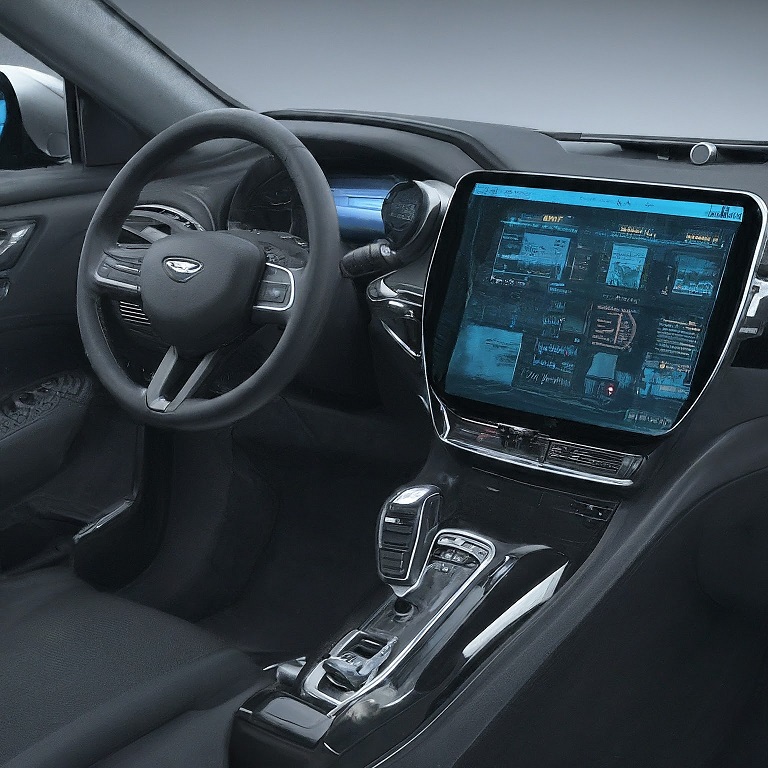In today’s world of ever-evolving automotive technology, features that enhance safety and driver assistance are taking center stage. Among these advancements is Active Driving Assist (ADA), a suite of technologies designed to make driving safer and less stressful. Whether you’re a seasoned driver or just starting, understanding ADA can significantly benefit your driving experience.
What is Active Driving Assist?
Active Driving Assist (ADA) is not a single technology, but rather a collection of driver-assistance features bundled under one name. The specific features can vary depending on the car manufacturer, but some common components include:
- Forward Collision Warning (FCW): This system uses radar or cameras to detect potential collisions with vehicles ahead. If a collision is likely, the system will warn the driver with visual and/or audible alerts, giving them time to react.
- Automatic Emergency Braking (AEB): This builds upon FCW. If the driver doesn’t react to the collision warning, AEB can automatically apply brakes to slow the car down or bring it to a complete stop, potentially mitigating the severity of a collision or even preventing it altogether.
- Lane Departure Warning (LDW): This system uses cameras to monitor lane markings on the road. If the car starts to drift out of its lane without the turn signal activated, LDW will typically provide a visual or audible alert to warn the driver.
- Lane Keeping Assist (LKA): LKA takes LDW a step further. In some cases, it can gently steer the car back into its lane if it detects unintentional lane departure.
- Blind Spot Monitoring (BSM): This system uses radar sensors to detect vehicles in your blind spots (areas not visible in your mirrors). When a vehicle enters your blind spot, BSM will typically provide a visual alert, often an indicator light on the side mirror.
- Adaptive Cruise Control (ACC): This system allows you to set a desired cruising speed. ACC uses radar or cameras to maintain a safe distance from the car in front of you, automatically adjusting your speed as needed. Some advanced systems can even bring your car to a complete stop in stop-and-go traffic.
Benefits of Active Driving Assist
There are numerous benefits to having Active Driving Assist in your car. Here are some of the most significant:
- Enhanced Safety: ADA features like FCW and AEB can significantly reduce the risk of collisions, especially rear-end collisions that often occur due to driver inattention.
- Reduced Driver Stress: Features like LKA and ACC can help alleviate fatigue and stress during long drives by handling some of the driving tasks.
- Improved Situational Awareness: BSM can help eliminate blind spots, a major contributor to lane change accidents.
- Increased Confidence: Knowing that your car has “eyes” in the back of its head and can react faster than you can in certain situations can boost your confidence behind the wheel.
Limitations of Active Driving Assist
It’s important to remember that ADA is not a magic bullet for accident prevention. Here are some limitations to keep in mind:
- Not a Substitute for Safe Driving: ADA features are designed to assist drivers, not replace them. Always remain alert, and focused on the road, and keep your hands on the wheel.
- System Dependence: Overreliance on ADA can lead to complacency. Don’t let the system lull you into a false sense of security.
- Environmental Limitations: Some ADA features, like FCW and LKA, can be less effective in poor weather conditions like fog, heavy rain, or snow.
- System Malfunctions: While rare, ADA systems can malfunction. Be prepared to take control of the vehicle if necessary.
Using Active Driving Assist Effectively
To get the most out of ADA, follow these tips:
- Familiarize yourself with the system: Consult your car’s owner’s manual to understand the specific features included in your ADA system and how they work.
- Activate the features you want to use: Most ADA systems have on/off buttons or settings menus. Choose which features you’re comfortable using.
- Don’t rely solely on the system: Always be aware of your surroundings and prepared to react if the system doesn’t.
- Maintain a safe following distance: ADA systems don’t eliminate the need to maintain a safe distance from the car in front of you.
- Get regular maintenance: Schedule regular maintenance to ensure your ADA system is functioning properly.
The Future of Active Driving Assist
Active Driving Assist technology is constantly evolving. Future iterations might include:
- More sophisticated object recognition: Systems that can detect not just vehicles, but also pedestrians, cyclists, and other objects
- Enhanced communication between vehicles (V2X): Cars equipped with V2X technology can “talk” to each other, exchanging information about location, speed, and direction. This can enable features like cooperative adaptive cruise control, where cars automatically maintain a safe distance even when entering or exiting highways.
- Higher levels of automation: As technology advances, we might see ADA systems evolve towards more automated driving, potentially culminating in fully self-driving cars. However, significant advancements in technology, regulations, and infrastructure are needed before fully self-driving cars become a widespread reality.
Active Driving Assist: A Stepping Stone to a Safer Future
Active Driving Assist represents a significant step forward in automotive safety technology. By providing drivers with additional support and alerts, ADA systems can significantly reduce human error, a major contributing factor to road accidents. While not a replacement for safe and attentive driving, ADA offers valuable assistance, making driving a more secure and less stressful experience. As the technology continues to evolve, we can expect even greater advancements in the future, paving the way for a safer and more automated driving experience for all.
Beyond the Basics: Considerations for Tech-Savvy Drivers
For those interested in diving deeper, here are some additional points to consider:
- The Debate on Levels of Automation: The Society of Automotive Engineers (SAE) has defined different levels of automation for vehicles. Current ADA systems typically fall under Level 2, which means they can assist with steering, braking, and acceleration but still require constant driver supervision. The path towards Level 3 automation (conditional automation) and beyond is a topic of ongoing debate, with considerations regarding safety, regulations, and ethical implications.
- The Role of LiDAR: While cameras and radar are commonly used in ADA systems, some manufacturers are exploring the use of LiDAR (Light Detection and Ranging) technology. LiDAR uses lasers to create 3D maps of the surroundings, offering potentially higher precision than cameras, especially in low-light conditions.
- The Importance of Driver Education: As ADA systems become more sophisticated, educating drivers on their proper use and limitations becomes increasingly important. Equipping drivers with the knowledge to leverage these systems effectively will be crucial in maximizing their safety benefits.
Related: Fix Your Car’s ABS Light: Safe and Effective Methods
By understanding the current state of Active Driving Assist, its potential for the future, and some of the technical considerations, you can make informed decisions about the role this technology can play in your driving experience. Remember, the ultimate goal is to create a safer and more enjoyable driving experience for everyone on the road.






